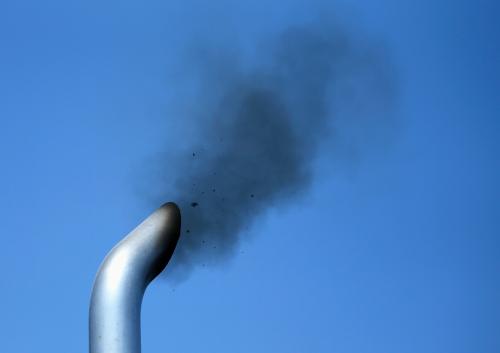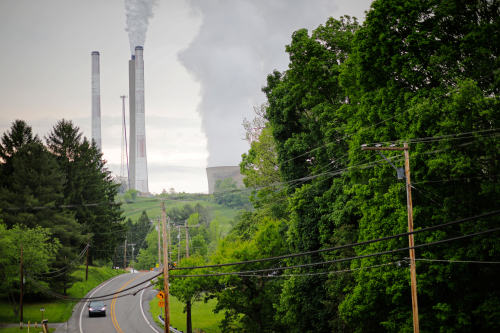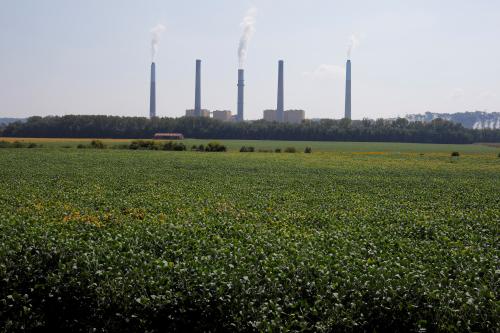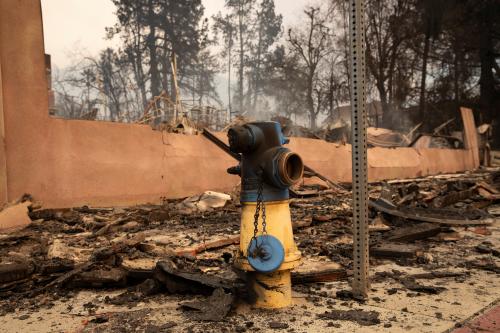This discussion paper summarizes results from the Stanford Energy Modeling Forum study on U.S. carbon price scenarios (EMF 32). More detail on any section of this discussion paper and other results of the study appear in the February 2018 special issue of Climate Change Economics.
Carbon pricing is an important policy tool for reducing greenhouse gas pollution. The Stanford Energy Modeling Forum exercise 32 convened eleven modeling teams to project emissions, energy, and economic outcomes of an illustrative range of economy-wide carbon price policies. The study compared a coordinated reference scenario involving no new policies with policy scenarios that impose a price on all fossil fuel-related carbon dioxide (CO2) emissions in the U.S. The CO2 price scenarios begin in 2020 at $25/ton or $50/ton and rise each year over inflation at one percent or five percent. The scenarios also vary by the use of the revenue from the carbon pricing policy; scenarios include rebates to households and deficit neutral reductions in marginal tax rates on capital and labor income. Across all models and policy scenarios, the study finds that carbon pricing leads to significant reductions in CO2 emissions, the majority of which occur in the electricity sector via the reduction of coal use. Policy effects on other energy sources vary by model, for example owing to different technology cost assumptions (e.g., cost of natural gas vs. wind generation). Some models translate energy shifts into changes in conventional air pollutants, reporting declines consistent with substantial air quality benefits from the policy scenarios.
The economic costs of the policies are expected to be modest – allowing for nearly identical economic growth– but vary across models. These costs are offset by benefits from avoided climate damages (which are not modeled in this study) and health benefits from reductions in conventional air pollution. The study finds that the CO2 taxes generate significant revenue; a $25/ton price would generate roughly $1.4 trillion over the first decade and all models reported that emissions reductions do not significantly depend on the use of the revenue. Using revenues to reduce capital or labor taxes reduces economy-wide costs in most models relative to household rebates, but the estimated size of the cost reductions varies significantly across models. Across all models that estimated impacts across households, devoting at least some revenue to household rebates improves outcomes for low income households relative to applying all revenue to reductions in other taxes. We focus here on results through 2030, concluding that beyond a decade model uncertainties are too large to make quantitative results useful for near-term policy design. Read the full paper here.
The Brookings Institution is committed to quality, independence, and impact.
We are supported by a diverse array of funders. In line with our values and policies, each Brookings publication represents the sole views of its author(s).







